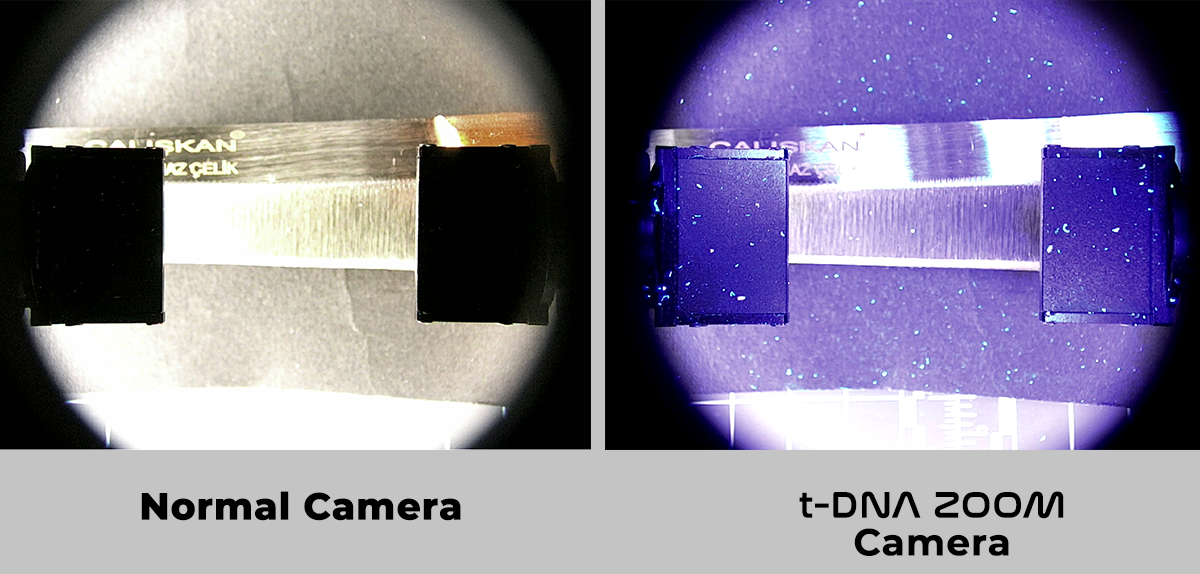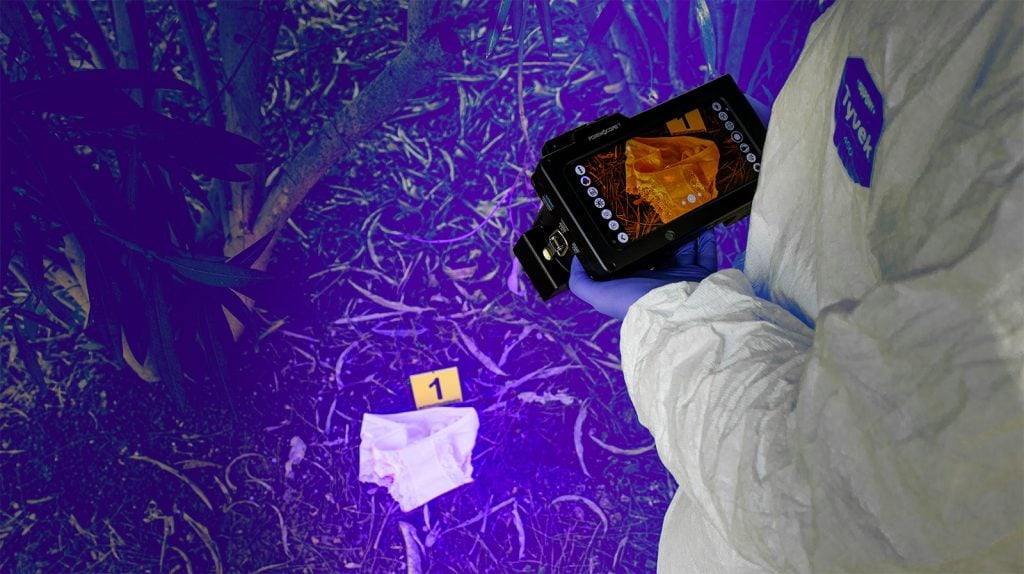
Touch DNA on Knife
The manner of injury may be a clue to the blade used for stab wounds and to the nature of the attack. For example, a cutting action can cause long but superficial cuts, while a deep puncture wound with a stud can result. A forensic investigator can measure the timing of the dashes to determine which impact killed the victim.
When the victim’s (or even the attacker’s) blood remains on a knife, the knife becomes forensic evidence. With the data obtained from a knife found at a crime scene, the blood groups, DNA containing skin cells, and fingerprints of the victim or the murderer can be reached.
The development of DNA profiles of the skin or epithelial cells resulting from touching emerged more than 20 years ago. Since then, DNA analysis methods have continued to evolve, and it has been found that less biological material is required to develop DNA profiles from touched objects or skin.

Picture 1.
Analysis of DNA profiles from touched objects has been done for many years. Objects shed from the skin can be identified by touch DNA, as there are nucleated and keratinized epithelial cells. The success rate of a full profile from Touch DNA depends on the skin characteristics of a person touching the object and their activities before touching it. The transfer of Touch DNA on different object surfaces differs according to surface type. The success ratio for various objects has been detected as 9% for glass, 23% for fabrics, and 36% for wood samples.
Touch DNA contains DNA from skin or epithelial cells that are transferred to objects or persons when touched with hands or other parts of the body. Although the outer layer of the skin contains nucleated dead skin cells, it has been theorized that small pieces of DNA are found on the surface of the skin and can be transferred to objects that are touched. Because the amount of DNA deposited by touch is usually small, the term “trace DNA” is often used to describe low-level amounts of DNA.
Identification with Touch DNA has become a tool for many cases worldwide. One of the most significant cases brought to light by the Touch DNA on a knife is the Amanda Knox and Meredith Kercher case.

Picture 2.
Amanda Knox, an American student, was arrested for the murder she committed after she went to Perugia, Italy, with the Erasmus student exchange program. Amanda Knox was accused of killing her 21-year-old housemate, Meredith Kercher, who was found with her throat slit in 2007 and spent four years in prison in Italy. She was released in 2011, returned to her country, the USA, and acquitted in 2015. It is known publicly as the “Meredith Incident” and the “Kercher Murder.” The suspects, Kercher’s roommate Amanda Knox and her then-Italian boyfriend, Raffaele Sollecito, were arrested on charges of forcing Kercher into group sex and causing her death.
Rudy Guede from Ivory Coast, who was found to be at home on the night of the incident and raped by Kercher, was captured in Germany and extradited to Italy. Guede, who opted for a speedy trial on charges of rape and murder, denied the murder charge but was sentenced to 29 years in prison, then reduced to 16 years in 2009.

Picture 3.
The ‘Meredith Kercher’ case has been a hot topic in the media since the crime was committed in 2007. Three people were arrested and sent to prison in connection with the incident, Amanda Knox and Raffaele Sollecito were acquitted in March 2015. Another defendant, Rudy Guede, continued to be convicted as the sole perpetrator. He was charged and imprisoned because his DNA profile matched multiple DNA profiles taken from the murder room and bathroom. It matched DNA profiles from a knife found far from the crime scene (discovered in a cutlery drawer in Sollecito’s apartment) and the bathroom he shared with the victim. Upon analysis, a low-level DNA trace attributed to the murder victim was found on the blade of a knife, and a DNA profile of Amanda Knox from the handle.
Another key piece of evidence was the DNA profile of Raffaele Sollecito from the bra found in the murder room. Then there was an extraordinary series of hearings and retrials, in which the two were convicted, acquitted, re-convicted, and finally acquitted in March 2015 (no further appeals are possible).

Picture 4.
The ‘trace-DNA’ evidence used in Amanda Knox and Rafaelle Sollecito’s case formed an important part of the evidence against her. No murder weapon was found at or near the crime scene, so the weapon must have been removed. A large knife was later found far from the scene in a cutlery drawer in Sollecito’s apartment. Investigators claimed it was the murder weapon. The defense said there was no murder weapon. On the knife found, DNA matching both Amanda Knox’s and Meredith Kercher’s DNA found a low-level DNA profile. However, the evidence was insufficient.



